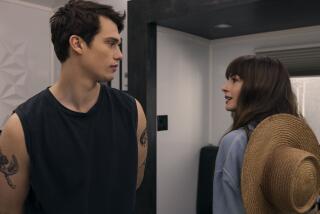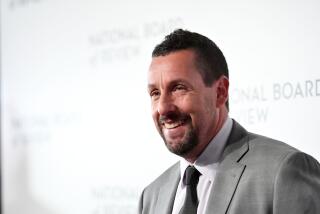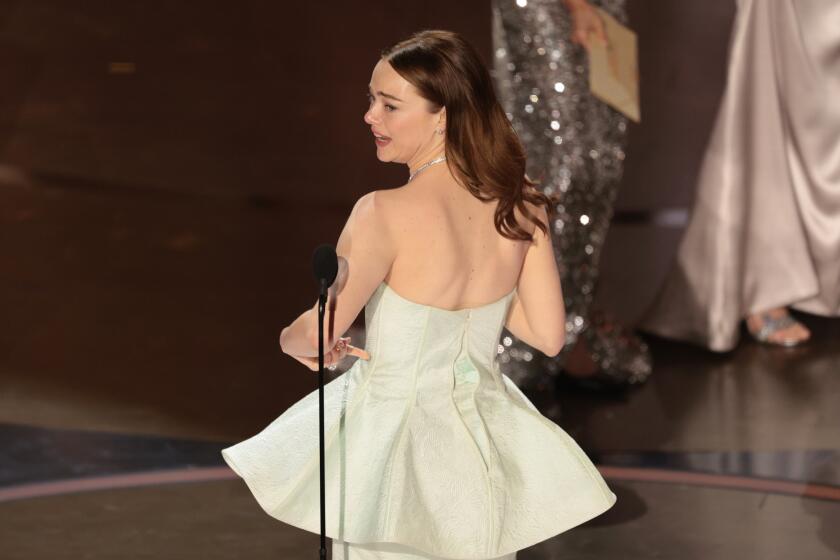The man behind wild eyes
If the eyes are the windows into the soul, then Kevin Carter has the power to draw the blinds. As a special effects contact lens painter, he can create everything from cataract-ridden eyes to the supernatural peepers of the living dead.
Raised in Medford, Ore., and Sonoma, Calif., Carter got hooked on horror films early on. “I loved the ‘Friday the 13th’ movies and Freddy Krueger in ‘A Nightmare on Elm Street’ and stuff like that,” he recalls. “What stood out in my head when it came to special-effects lenses were the contact lenses that vampires wore in the movies that made their eyes so bright and vivid.”
Shortly after graduating from high school, Carter went to work for his dad, who makes therapeutic contact lenses. “Basically, [clients] would send us a photograph of their good eye, and I would duplicate the iris pattern and the color onto a contact lens for their damaged eye,” says Carter. “Instead of having an eye that was all white or a dilated pupil, they would look normal.”
Carter decided that abnormal eyes were much more to his liking, and he started his own special-effects contact lens business with his wife, Ginni. They created a website offering their services, and makeup artist Robert Hall from Almost Human gave Carter his first job on a Coors Light commercial.
Since then, he has worked on numerous feature films, including “The Fountain,” “Night at the Museum,” “10,000 BC,” “Hellboy II: The Golden Army,” and this month’s “Punisher: War Zone.”
The drawing board: Each contact lens order begins with a standard appointment with an optometrist. “The actors have to go in to get an eye exam and a contact lens fitting done,” says Carter. “We start off with a clear lens, and it can be in the actor’s prescription. We only use soft lenses. The lenses we did for ‘Punisher’ were full-eye lenses.”
To dye for: Carter hand-paints all of his lenses, and this painstaking process takes between one and five hours per pair. “A lot of times the special-effects makeup artist will send us a photograph or a drawing of what they’re looking for to go along with the makeup, so then we’ll duplicate it off of that by hand,” he says. “We just basically put the color on, and I use a really small paintbrush to dye the lens to whatever specifications the studio may ask for. We say hand-painted, but it’s actually dyes that we use.”
Through thick and thin: Lenses can range from clear to completely opaque. “For some designs, they may just want the actor to look like his eyes are bloodshot, so that would actually use a clear lens, and we would make the edges over the whites of the eyes look bloodshot,” he says. “But if they have blue eyes and they need to have brown eyes, we can do that too. We can completely opaque their eye color out, if need be. And sometimes, if they have really light-colored eyes, we can actually put a translucent color over their existing eye color, which produces another effect, which is kind of cool.”
See how they run: Unlike most contacts, special-effects lenses tend to make vision worse rather than correct it. “Most of them you can see out of,” says Carter. “You do get a little bit of tunnel vision because you’re looking through a small hole. With some of them -- for instance, if we’re going for a blind-eye effect with cataracts -- their vision can either be completely obstructed or partially obstructed.”
The eyes have it: While Carter usually paints anywhere from 10 to 40 pairs of contacts per week, some jobs keep him far busier. “The most we did was probably 110 pairs for a movie,” he says. “It was ‘Insanitarium.’ It took place in an insane asylum, and they were infected with some kind of drug that made their eyes look weird. There were three different stages that we did. It was pretty cool!”
--
More to Read
Only good movies
Get the Indie Focus newsletter, Mark Olsen's weekly guide to the world of cinema.
You may occasionally receive promotional content from the Los Angeles Times.






